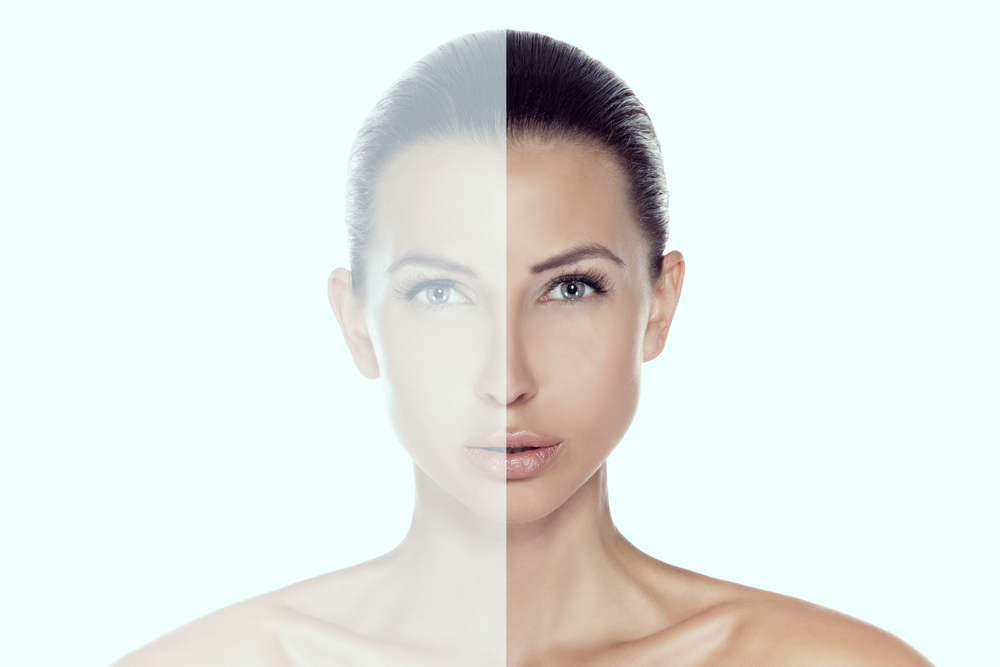Facial symmetry is regarded by many as a key part of beauty, but perfectly symmetrical faces are not always the most beautiful.
Asymmetry is natural. Even your favorite actors and supermodels have asymmetrical faces. That said, it is possible to correct extreme asymmetry through minimally invasive treatments or surgery.
Those with noticeable or extreme facial asymmetry may feel self-conscious and wish to achieve a more balanced facial appearance. This can be achieved through injectable facial fillers, surgery, or by other means.
Causes Of Facial Asymmetry
There are several potential causes of extreme facial asymmetry:
- Trauma that breaks the nose or alters other facial features
- Stroke
- Genetics
- Stressors during physical development
Dr. Ken Dembny, a board-certified plastic surgeon in Milwaukee explains, that facial asymmetry is usually multifactorial. “It is usually related to some combination of differences in facial length, underlying skeletal shape, muscular size and activity, and underlying subcutaneous volume,” he says.
Does It Matter If Your Face Is Asymmetrical?
Researchers have been able to show through surveys that respondents associate symmetry with facial attractiveness, and many plastic and cosmetic surgeons take into account certain proportions and geometry when assessing a patient’s face.
Some even assess how close a patient’s facial measurements are to a ratio of 1:1.62, also known as Phi or the “Golden Ratio.”
Perfect facial symmetry does not exist in nature; every person’s face is at least slightly asymmetrical. This is easily demonstrated through a simple photography exercise.
As Dr. William H. Truswell, President-elect of American Academy of Facial Plastic & Reconstructive Surgery (AAFPRS), explains, “Even the most beautiful and seemingly symmetrical of faces can be photographed, the image divided in half on a computer and two faces assembled from the two right halves joined together and two left halves likewise. The result will be two very different faces than the original face.”
Additionally, few plastic surgeons believe that perfect symmetry is the goal. “The combination of proportion, shape, and volume are probably more important than facial symmetry in terms of true beauty” says Demby. “Linda Evangelista comes immediately to mind. During her super model days in the 1980s, photographs frequently documented her upper facial asymmetry. Yet, she was stunningly beautiful. So for some, asymmetry can actually create a uniqueness to their beauty.”
This sentiment is echoed by Dr. Maria Lombardo, a cosmetic surgeon in Rancho Mirage, California. “We do interpret ‘different’ as interesting in some cases,” says Lombardo. “A man with a particularly strong jawline — that doesn’t fit the Golden Rule exactly — is perceived as more masculine, which is considered attractive as well. For a woman, an example might be a particularly high cheek bone that makes her stand out despite being outside of the classic Golden Rule.”
Dr. Gregory A. Buford, of Englewood, Colorado, also agrees, stating that the presence of asymmetry can actually create beauty. However, he also points out the flipside: “A little goes a long way. With too much asymmetry, beauty decreases. This holds true for both men and women.”
In fact, significant facial asymmetry can be the source of both functional problems and aesthetic issues. Consequently, when a patient complains of facial asymmetry to a surgeon, the surgeon will investigate the underlying cause.
A thorough assessment of facial asymmetry usually means looking at patient history, a physical exam, and possibly medical imaging tests which can make it easier for a surgeon to make an objective diagnosis and take a more accurate measurement of the patient’s facial symmetry.
Medical imagining can also help a surgeon decide on a treatment plan. Soft tissue, skeletal, and dental disparities between the right side and left side of the face, are part of any comprehensive evaluation of facial symmetry.

Face Symmetry Calculators
For a true analysis of your facial symmetry you should turn to a pro — in other words, a board-certified plastic surgeon or facial plastic surgeon.
It’s also possible to get a rough idea of whether you have an asymmetrical face. In fact, there’s an app for that — several, actually — not to mention websites that can also analyse asymmetry.
For example, the facial symmetry test SymFace allows you to upload a photo of yourself and then provides you with a symmetry score. Another DIY option is to try dividing a photo of yourself in two and then reversing one side, using PhotoShop or another photo editing program.
Since perfect symmetry isn’t the goal anyway, you don’t really need this facial symmetry tool, or any of the other digital tools to analyze your facial symmetry.
“While there are probably apps that will point out asymmetry and compare one side of the face to the other, detecting asymmetry is as simple as taking a photograph, a straight-on headshot, and carefully analyzing that photo for differences in volume, lines, wrinkles, and other suggestions of asymmetry,” says Buford.
How Can Facial Asymmetry Be Corrected?
In many cases there is no reason to correct facial asymmetry. However, for those that do require treatment, facial asymmetry correction basically comes in two forms: minimally invasive treatments and surgery.
Non-surgical Treatments
Slight asymmetries can easily be addressed with certain minimally invasive treatments. For example, fillers such as Radiesse, Voluma, or Sculptra can be administered to add volume to one side of the cheek or jaw.
Botox is used by some surgeons to help reduce the prominence of the jaw or raise an eyebrow that sits too low. Even nasal asymmetries can be addressed in some cases. “Tiny amounts of filler, in the right places, can create the illusion of straightening a nose or diminishing a hump,” says Lombardo.
Indeed, the fact that so many people are talking about facial symmetry these days is due in part to the use of soft fillers, according to Dembny. “From a current plastic surgeon’s standpoint, the attention given to facial asymmetry is probably more prevalent than it ever has been. Today’s use of soft tissue fillers always includes an assessment of facial shape, volume, and symmetry,” he explains.
“Soft tissue fillers are no longer just ‘line fillers,’” he continues. “These products are now more appropriately used for facial volume restoration and enhancement. In order to properly restore and enhance facial volume, particular attention is also paid to shape and symmetry. The key to a successful soft tissue filler treatment is to improve and restore facial volume while at the same time maintaining or enhancing facial contours and improving facial asymmetries.”
Asymmetrical Face Surgery
If asymmetry is severe, with noticeable skeletal differences between the right and left sides of the face, administering facial fillers may result in a “doughy” appearance. In these cases some surgeons recommend the use of facial implants to balance out the face.
Truswell says that while surgery cannot create perfect symmetry it can improve it in some cases. Examples he cites include using two different sized cheek implants in the case of mid-face imbalance, a unilateral brow or forehead lift to elevate a lower eyebrow and bring it more in line with the higher side, and surgery for one protruding ear to reduce the projection and match the unaffected side.
It should be noted that the aging of soft tissues in the face might eventually make facial implants look out of place.
How Much Asymmetry Is Too Much?
In certain cases, it can be difficult to determine when normal asymmetry crosses the line into extreme asymmetry. That said, obvious markers of asymmetry will stand out.
If you are having difficulty determining if your face is significantly asymmetrical or not, these procedures are likely not for you. Other options are available to meet your specific aesthetic goals without specifically focusing on issues of symmetry.
Truswell points out that in some cases neither a surgical procedure nor minimally invasive treatments are necessary as proper use of cosmetics can camouflage low level imbalances.
In the end, the only way you will know for sure if you would benefit from cosmetic treatment for your facial asymmetries is to visit a board-certified plastic surgeon or facial plastic surgeon.









